Day 2 & 3 of the Annapurna Base Camp Trek
Letter #28: Just having one of the most incredible, rewarding experiences of my life. And freezing my butt off every night.
4/1/23
We left Mountain Discovery Lodge at 7am the next day to avoid the imminent rainfall around noon. We reached the next village, Chhomrong, by 11:50am and would be staying for the evening, which was a good thing because the downpour started at 1pm. It lasted 3 hours, so strong that the nearest electric pole was struck by lightning and the lodge lost power for the remainder of the day. Everyone in the room shrieked, including the woman running the kitchen who, laughing, would retell the story of dropping every single pan she was washing when she heard the loud crack outside, all of us laughing at her dramatic expressions.
Abinta, Nabaraj, and myself bundled up, ate lunch, and spent the afternoon playing cards with some of the other trekkers. I learned a new Nepali game called Dhumbal (I wasn’t, shockingly, half bad at it).
When you’re actually trekking, the temperature matters much less. Your body is working hard to climb up and down the trails, so it’s easy to warm up and shed layers. But sitting around the lodges, sleeping at night, changing clothes in the morning, and using the shared bathrooms is a different story. It is CONSTANTLY cold.
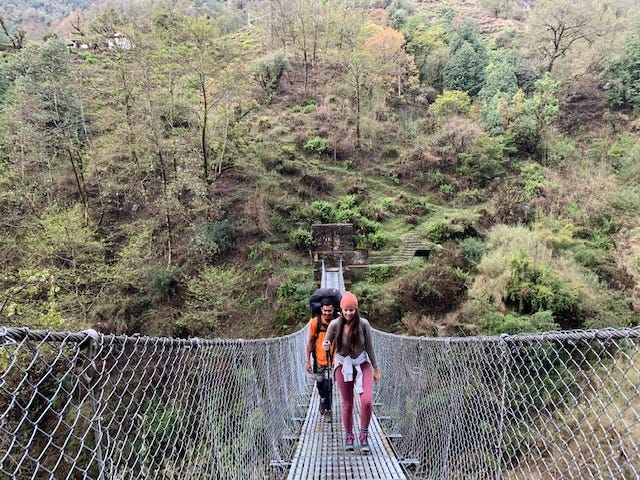
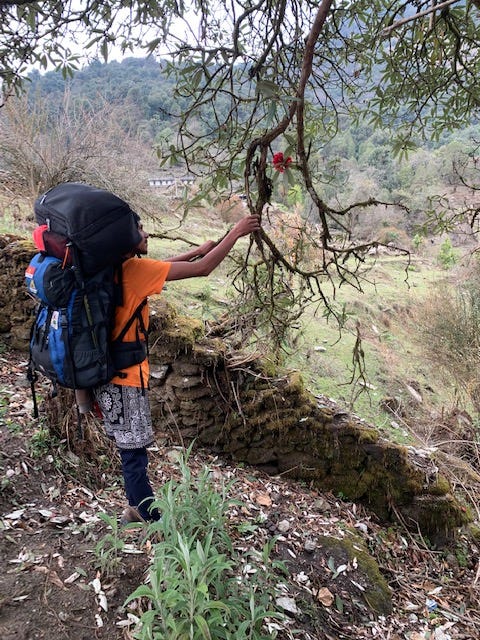
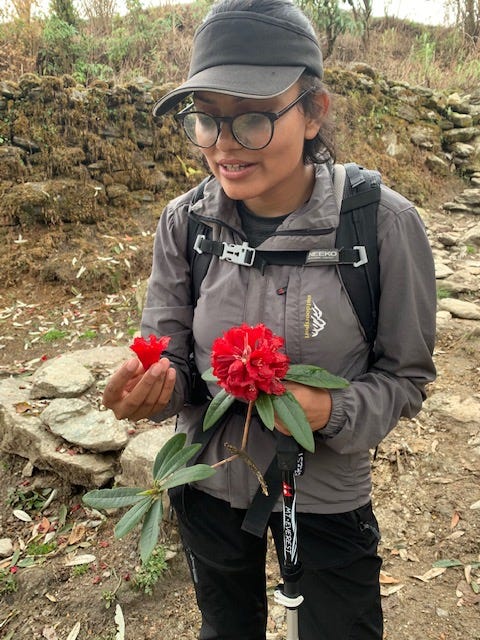

Abinta taught me to zig zag as we descended the mountain side in order to save my knees from the pain of impact later on. Like a robot, I followed in her footsteps, sometimes chatting, and sometimes wordlessly weaving our way along the paths.
One of the best parts of trekking is just the happy little surprises. Small things. I ran into SO many puppies. It seemed like every lodge had them since it was spring time. Mountain dogs would regularly follow you on your trek, a happy little companion to show you the way. When looking for a toilet and seeing a door that said “Toilet & Bath” I would come to learn meant…WESTERN TOILET! As opposed to having to use only a squat toilet, which I hadn’t quite mastered yet. I made Abinta crack up as I not-so-discreetly asked her how, when using a squat toilet, you manage not to pee on yourself…or tip over…or worse? 😅 She told me it is much more sanitary (not to sit on the same surface everyone else does), and that it is more comfortable to just sit back on your own legs. What she said actually made sense, I just needed more practice. 😬
Ok, back to the small things. Running into other trekkers and walking together for a bit, sharing stories. Sitting down after the long trek, ordering hot food, and feeling a collective sense of accomplishment, having a meal around other trekkers—it felt similar to the buzzing energy in the ski lodge at the end of a long day of downhill skiing. Everyone exhausted and bundled up, excited to share food, drinks, and their stories of the day.
I’m so happy I’m doing this trek, although I am only on day 2, but I was ill-prepared. I didn’t take the advise from the trekking company seriously enough and I was freaked out at how cold I was already.
Luckily, Chhomrong has a small shop where I could buy some gore-tex pants, another poncho to cover Nabbu Raaj and my bag (that he was so kindly carrying for me), water resistant gloves, and some wool slippers. Hopefully I can keep myself somewhat sane as we climb higher. Apparently Annapurna Base Camp has a LOT of snow, so this trek will be even more interesting in a couple days.

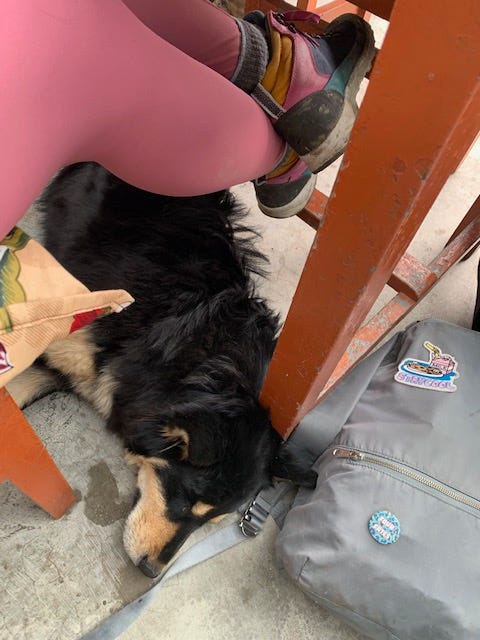
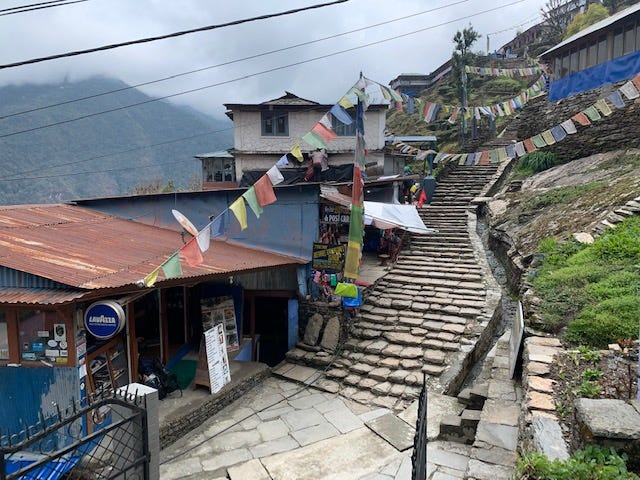
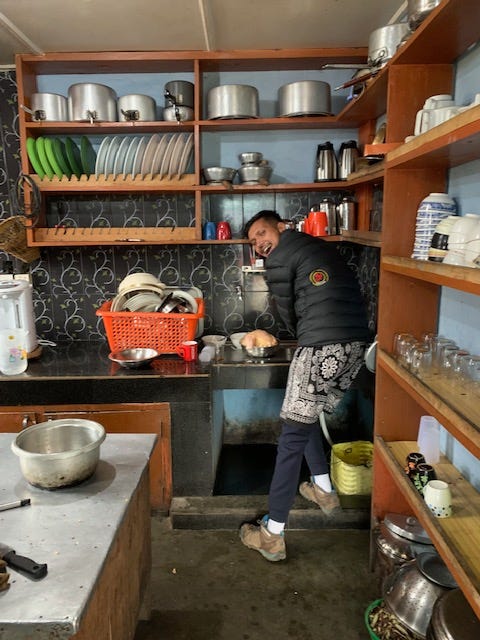
It’s fascinating to see how people live up here. The locals build trails from village to village, a series of stairs that keep them connected. Cars can’t reach this place, so everything is either carried in by a human (porters), or strapped to a mule. Many of the villagers travel these trails wearing only slides on their feet (called slippers in most Asian countries). A large wicker basket with a strap supported by their forehead—called a namlo—hangs at the locals’ backs. The porters are fascinating—I highly recommend reading the link highlighted above to learn more about how resilient and strong these individuals are.
The mountains are so quiet, sometimes you’ll begin to hear what sounds like wind chimes, but then realize it is a parade of mules walking along the trail, carrying goods.
And to think…these mountain people go without heat all year long! They’re so accustomed to it, of course, but still! Such a challenging way to live from a Western perspective where we think we need so much to be comfortable. They survive with very little. They’re welcoming and generous, exclaiming “Namaste”, their hands pressed together in prayer upon greeting you. Even if you’re just passing through a village, they’ll offer us use of the toilet or a refill on fresh mountain water. It’s been fun to pass the afternoons and evenings together with the lodge owners, everyone (the guides, villagers, porters, and trekkers) existing together in one room.
We plan to go to sleep even earlier tonight, as we leave for tomorrow’s trek at 6am in order to beat the rain again. We have a 6 hour trek ahead of us tomorrow.
4/2/23
Bamboo—Our 6 hour trek today turned out to be only 4.5 hours. Abinta laughed with the other guides along the way, calling me a rabbit because I could walk so much faster than their traditionally turtle-paced customers. I think years of distance running outside and daily workouts without much rest in between have conditioned me well for this journey. So the combination of being fit enough to keep up a quick pace, combined with the desire to avoid getting stuck in the rain, helped us reach each village in record time.
Tomorrow we will begin seeing snow on our way to Deurali, the final village before we make it to base camp. Already the view changes quickly as we get closer to the snow-capped peaks of Machhapuchhre (which means “The Fishtail”, for the expansive and jagged shape of the peak) and Annapurna South.
The villages change, too. After Chhomrong, you won’t see mules anymore, or many women, either. Abinta explained that we’ll be served by men at the lodges from now all. ALL the supplies are hand-carried by the porters (with the exception of some supplies being dropped by helicopter at Annapurna Base Camp). These sections of the mountains under strict preservation, so no fires to warm up at, and bottled water is prohibited. I carried water purifying tablets with me and refilled from the faucets where ice cold, fresh mountain water flowed freely—some of the spigots couldn’t even be turned off, the sheer force and abundance of water was so strong.
The locals don’t officially live at the base camps of Machhapuchhre or the Annapurna range. They stay there for the trekkers and tourists only. It is too cold to live there full-time, the threat of avalanches always looming.
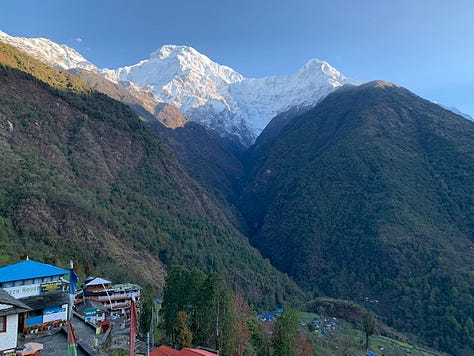
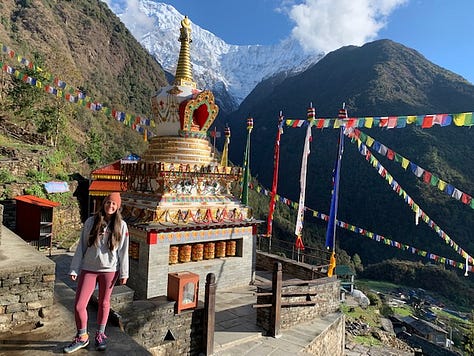

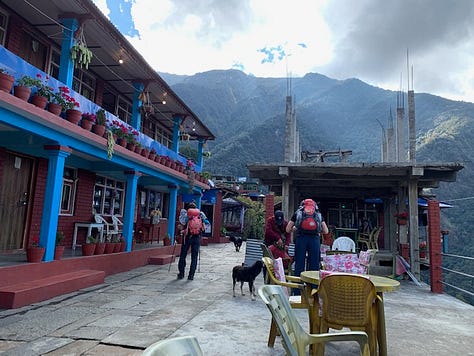
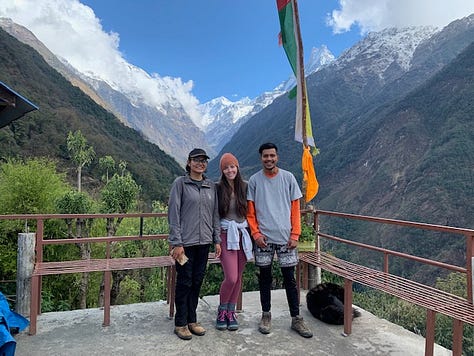
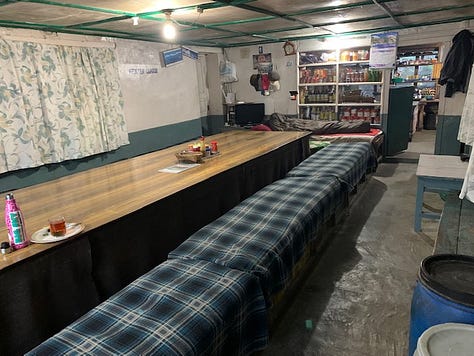
Hey! Would you like to connect over creativity, self-growth, and problem-solving? Or just to have a virtual glass of wine or mocktail? Please book a time on my Calendly for us to chat! I can’t wait to see you. XOXO.
If you’re enjoying On the Road, please share with others who you may think would enjoy as well! As always, I love reading your comments and feedback. If you're not already subscribed, please click the button below so I can continue sending you weekly-ish stories and lessons while I travel. 🚙

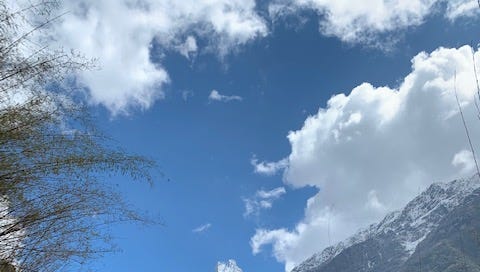



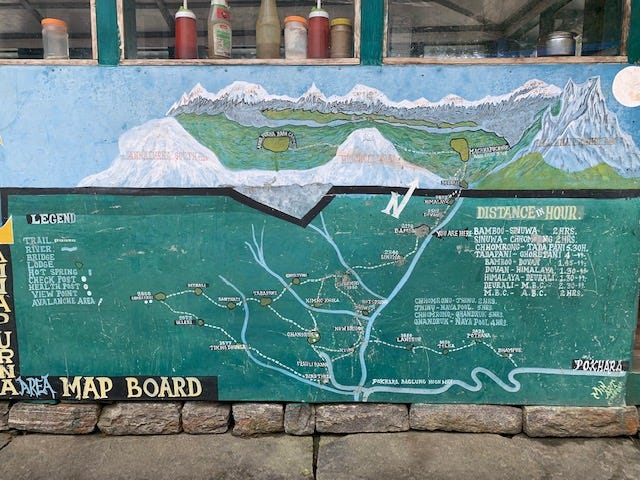
You are such an inspiration Heather ! I’m sure sometimes you yourself can’t believe you are actually fulfilling this dream of yours. Make each moment count and keep sharing . Love you
What an absolutely incredible experience!!